Cricket as a whole requires players to adapt a complete body into fitness caliber as well as mental alertness and strategic thought. From the explosive power fast bowlers possess to the agility of wicket-keepers, the game's various positions are legitimate stressors on the human body and thought. Thus, there is a pursuit among professional cricketers for means to boost efficiency, let the body recover more, and sustain long careers. The use of red light therapy (RLT) among professional cricketers, which helps to increase performance and recovery as well as lengthen careers is an emerging trend.

Physical Recovery and Injury Prevention
Cricket players regularly suffer injuries, from minor muscle pulls to severe ligament ruptures. Proper rehabilitation is a must to reduce the recovery period and prevent repetitive injuries. Recovery using red light therapy gets deep into tissues, showing highly promising applications for recovery and injury prevention.
Lower Body Healing: Addressing Hamstring and Thigh Injuries
Hamstring and thigh injuries are common among fast bowlers and batsmen, as the rapid, explosive sprints between wickets and the high-speed deliveries will put significant strain on these muscles. Red light therapy entails encouraging cell repair mechanisms and augmenting the circulation. Moreover, optimal circulation helps in the conveyance of nutrients and oxygen to an injured area while diminishing inflammation.
Fast bowlers under repetitive stress in this particular line of work may find the advantages of moderate exposure to RLT on the lower limbs. Introducing red light therapy into the post-show ritual may enable fast healing of the muscle, less pain, and a lower probability of a repeated injury.
Deep Tissue Repair for Back and Spinal Conditions
Cricketers often complain about back injuries due to the kind of stress they undergo in their spines brought on by over repeated activities, most especially for those who bowl since they are the ones who are under a lot of pressure. Chronic conditions like disc herniation or lumbar strain can interfere heavily with their performance and even curtail one's sports career. Red light therapy can penetrate deep into tissues, heal damaged cells, and lessen inflammation occurring in the region of the spine.
By incorporating RLT into their recovery programs, cricket players can find much better flexibility and strength in their back. It's a non-invasive, safe alternative compared to invasive procedures or lifelong painkiller usage.
Performance Enhancement for Different Player Roles
Professional cricket players need to optimize their performance through recovery, too. As a means of increasing both physical and mental readiness, red light therapy can, potentially, enhance their excellence in a more specialized way in the field.
Targeted Treatment for Fast Bowlers and All-rounders
Bowling and all-rounder positions in cricket are physically demanding roles. They require pure muscle power for sprinting, bowling and batting. The very intensity of their duties leads to stiff muscles and much stress on their joints. Regular RLT can increase the function of mitochondria, which is the energy producing power house of the cells and improve energy production and muscle performance.
In addition, red light therapy has been shown to promote collagen synthesis, which can enhance the connective tissues such as ligaments and tendons. This is particularly beneficial for all-rounders who need to excel in both batting and bowling.
Recovery Protocols for Wicket-keepers and Fielders
Agility, flexibility, and fast reflexes have made wicket-keepers and fielders the pillars of modern-day cricket. The constant crouching and diving put a lot of pressure on their joints, mainly the knees and shoulders. Red light therapy helps lower the pain and inflammation in the joints, which paves the way for greater mobility and faster recovery post-matches.
Players generally end up a little bruised or suffering slight wear-and-tear injuries after a game. The red light from these therapeutic systems usually soothes the swellings whilst quickening the tissue recovery process itself, thus letting the player get physically fit for competitions on short notice.

Mental Health and Sleep Support
For athletes who require physical activities and harsh schedules, Physical Therapy is essential for fast recovery and muscle regeneration after intense exercise. It will also help in restoring emotional health.
Managing Athletic Anxiety Through Light Therapy
Red-light therapy is shown to regulate cortisol levels - the hormone responsible for stress. In balancing cortisol, players can better maintain peace, enabling them to focus more on the match.
In addition, RLT boosts serotonin and dopamine production, leading to improved mood and decreased anxiety symptoms. It is, therefore, an excellent resource for controlling demanding mental requirements in elite cricket.
Improving Sleep Quality and Recovery Patterns
Sleep is a significant component of athlete recovery, especially when they are cricketers, as the rigorous travel schedules and switching of time zones can disrupt sleep patterns. Having positive impacts in circadian cycle control, red light therapy showed efficiency in enhancing sleep-wake cycles that come with the human body.
Because red light therapy is known to do wonders for the production of the sleep hormone melatonin, players can use a red-light mode before going to sleep. It guarantees quality sleep to players and wakes them up feeling fresh and ready to play. Improved sleep helps one's muscles recover and improves cognitive function, which is critical for a good performance in the field.
Long-term Career Sustainability
A cricketer's professional career demands great consistency over the years. The use of red light therapy no doubt means good immediate recovery and performance, but it is extremely important for long-term physical and mental sustainability.
Preventive Care for Common Cricket-Related Injuries
Injuries should be prevented before they have healed completely. When people do regular RLT sessions, their muscles, joints, and connective tissue are strengthened so that they can better withstand the wear and tear of cricket.
Baseball players who get repetitive strain injuries in the wrists and forearms can use RLT for maintaining a healthy and flexible wrist and forearm. It aids players in extending their playing careers and, in the long run, offers prevention of injuries..
Maintaining Physical and Mental Longevity in Cricket
From day to day advancing in age, professional cricket can do damage to mind and body of the athlete due to the challenge it presents. Treatment with red light rays helps hinder the aging process by promoting the healing of cells and reducing oxidative stress. This also facilitates an increase in stored energy and shortened recovery and increases overall function.
At the same time, the mental fitness advantages of RLT ensure that players remain committed to game and their careers experience continuous growth. It acts as a catalyst and encourages motivation and focus in athletes for long periods throughout their careers.
Conclusion
From the acceleration of recovery and injury prevention to the great enhancement of performance and support for mental health, the approach becomes critical with light therapy for both professionals and cricketers. This nature of therapy is not invasive and it could answer the unique needs of the world's cricket. As the cricketing world becomes increasingly competitive, incorporating advanced recovery and performance technologies, like red light therapy can offer novel solutions.
References
- Pardiwala DN, Rao NN, Varshney AV. Injuries in Cricket. Sports Health. 2018;10(3):217-222. doi:10.1177/1941738117732318
- Alves AC, Vieira R, Leal-Junior E, et al. Effect of low-level laser therapy on the expression of inflammatory mediators and on neutrophils and macrophages in acute joint inflammation. Arthritis Res Ther. 2013;15(5):R116. doi:10.1186/ar4296
- Zhao J, Tian Y, Nie J, Xu J, Liu D. Red light and the sleep quality and endurance performance of Chinese female basketball players. J Athl Train. 2012;47(6):673-678. doi:10.4085/1062-6050-47.6.08













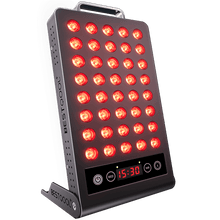
 Small
Small
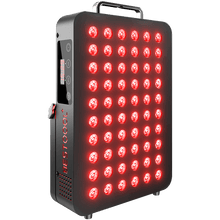
 Moderate
Moderate
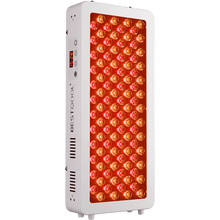
 Moderate
Moderate
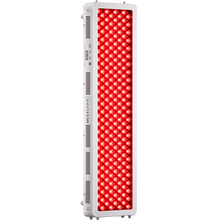
 Moderate
Moderate
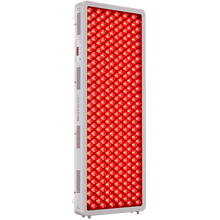
 Full
Full



